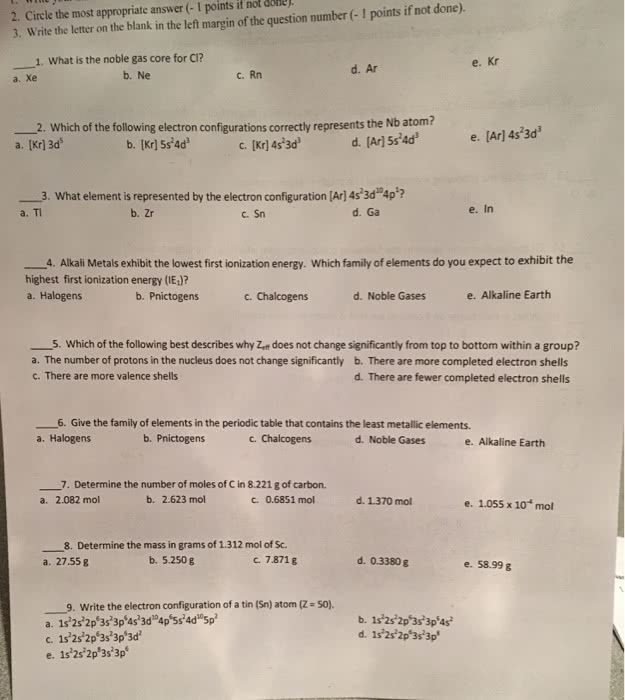CHEM101 Lecture Notes - Lecture 9: Ionic Radius, Isoelectronicity, Noble Gas

77
CHEM101 Full Course Notes
Verified Note
77 documents
Document Summary
Elements at either end of a period gain or lose electrons to attain a filled outer level. The resulting ion will have a noble gas electron configuration and is said to be isoelectronic with that noble gas. Main-group elements whose ions have noble gas electron configurations. Metals tend to lose valence e to form cations: main group metals (cid:111) lose e to attain noble gas configuration (cations) 1s^2 2s^1 > li^+ + e^- 1s^2 [he: main group nonmetals (cid:111) gain e to attain noble gas configuration (anions) Transition-metal atoms can form several cations, with all the ns electrons removed first, followed by some of its (n 1)d electrons. Their metal ions rarely attain a noble gas configuration. Empty the highest energy level (remove ns and np electrons); keep a filled (n 1) d sublevel. Remove np electrons; keep ns2 (inert pair) and (n 1)d. Transition metal ions: ns electrons are (cid:862)first in, first out(cid:863)


